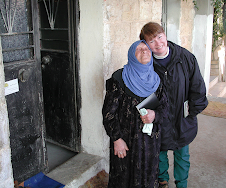Most of you know that I work at the Cochran Mill Nature Center and in a high school, where I substitute teach in Special Needs classes. I am delighted to bring nature into the classroom and often give presentations to the four classes, thanks to the generosity of CMNC.
Recently I brought Pearl, a bearded dragon, to school, where she was calm and tame and a huge hit with the students and teachers. She sat on my arm and let any-and-everyone touch, pat, and stroke her (even against the grain, so to speak). Pearl is a Pogona vitticeps, a type of lizard from Australia. They are called "bearded" because they can swell and darken their dewlaps like a big, scary beard. This display is a part of their body language designed to frighten off attackers.
Other body languages includes head bobbing to show dominance and a slow arc of the "arm" (front leg) to indicate submission.
THREE HANDS REACH OUT AND TOUCH PEARL
Bearded dragons live in arid semi-desert and woodland areas in Australia. Good climbers, they love to bask on limbs and rocks to warm themselves.
Pearl obligingly snapped up apple bits and lettuce with her sticky tongue, thrilling her audience, who showered down pieces of food, eager to feed her.
THE CLASS WATCHES AS ONE STUDENT OVERCOMES RELUCTANCE TO TOUCH
These little fellows have unusual teeth. Their front teeth fall out and grow back regularly, but their jaw teeth are permanent.
Unlike snakes, dragons can hear quite well (snakes have no ears). The have a similar ability to "taste" the air, though, to keep tabs on activity in their areas. They also have good vision, with full color. Since their eyes are on the sides of their heads, they enjoy excellent fields of vision.

PEARL EXHIBITS HER SANDPAPER-LIKE BACK
Besides using her scaly skin to "glue" herself into a crevice in case of attack, Pearl could also collect rain on her bumpy hide, then lower her head and the rain would flow down into her mouth.
BEARDED DRAGONS ARE POPULAR PETS
Calm and friendly toward humans, bearded dragons make good pets. They average 13" to 24" and have a life span of five to ten years. Their habitat is easy to keep clean and they are not escape artists, as some pets are.

STUDENTS EXAMINE PEARL'S "THIRD EYE"
On the menus of large lizards, dingoes, and birds of prey, bearded dragons, avoid capture by hiding in rocky crevices. If an animal tries to pull the dragon out of his hiding place by his tail, he can inflate his body, stiffening his side spikes and pressing against the rocks. With his rough skin clinging to his surroundings, he is extremely hard to pull out, even to the point of losing his tail in the process.
Another aid to avoid being dinner, dragons have a "third eye", a special group of cells on top of the head (parietal eye), which senses heat and shadows. If a large bird sails above, looking for a scaly snack, the little dragon senses its shadow and scurries for cover.
Pearl was a wonderful visitor to the classroom and the students are looking forward to next week's encounter -- hissing cockroaches!
































